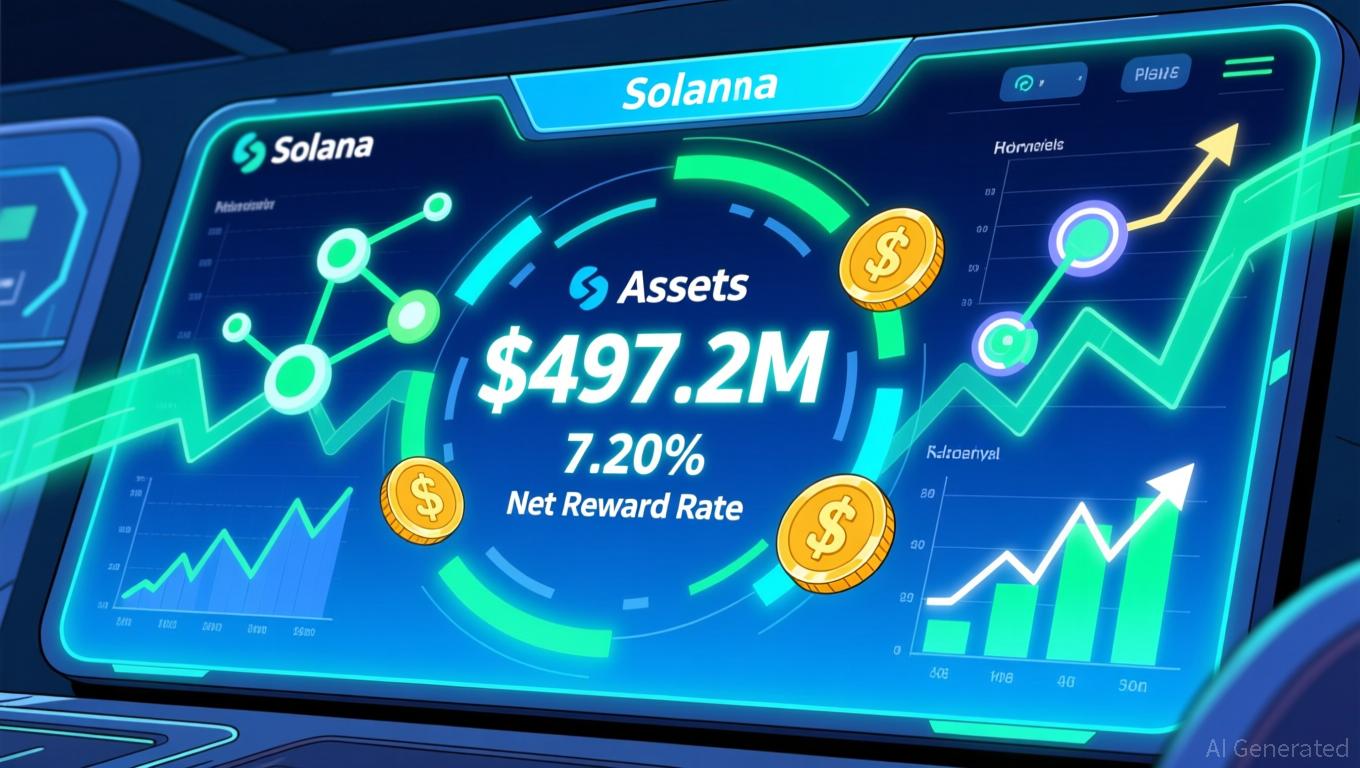Wall Street is Bought in On Crypto’s Upside Potential, But Not Its Tech
Wall Street’s appetite for crypto is stronger than ever. BlackRock’s Bitcoin ETF has broken inflow records. Fidelity and VanEck have followed suit with new spot products. Even the Nasdaq has hinted at expanding its digital asset trading infrastructure. Yet, for all this momentum, almost none of it actually happens onchain.
Institutions now treat crypto as a legitimate asset class, but not as a place to operate. The bulk of trading, settlement, and market-making still takes place on private servers and traditional rails.
The reason is simple: blockchains, in their current form, don’t yet meet institutional performance standards. Until they can deliver predictable speed, reliable data access, and operational resilience on par with Wall Street’s systems, the largest players will continue to trade off-chain, limiting transparency, liquidity, and the very innovation that made crypto compelling in the first place.
Why order flow stays off-chain
Institutions avoid trading onchain because most blockchains don’t meet their standards. Institutions require both speed and reliability, and blockchains tend to struggle with the latter.
Many blockchains become congested under peak stress, causing transactions to fail unpredictably. Gas fees can change erratically as network activity fluctuates, introducing additional chaos. Institutions refuse to operate in such an unpredictable environment.
Institutions also need to ensure, beyond doubt, that trades will settle correctly, even when many things happen at once. Some blockchains such as Layer 2s or rollups rely on optimistic settlement techniques that work most of the time, but sometimes require transactions to be rolled back, reversing settled transactions.
Within these constraints, institutions need to ensure they are able to trade as quickly as possible. In traditional markets, institutions have paid millions to shorten the length of fiber optic cable between them and the Nasdaq, allowing them to settle trades a nano second ahead of competitors. Blockchain latency is still in the seconds or even minutes, which is not competitive at all.
It’s important to note that modern institutions have access to crypto ETFs, enabling them to purchase crypto exposure through traditional markets using the optimized fiber optic cables they are familiar with. This means that to attract onchain institutional trading, a blockchain must surpass the speeds of traditional markets (why would institutions switch to a slower trading venue?).
Upgrading blockchains to institutional standards
Institutions won’t simply create a Metamask wallet and start trading on Ethereum. They require custom blockchains built to meet the same performance, reliability, and accountability standards as traditional markets.
One key optimization is instruction-level parallelism with deterministic conflict resolution. In simple terms, this means a blockchain can process many trades at once (like multiple cashiers ringing up customers in parallel) while guaranteeing that everyone’s receipt comes out correct and in the right order every time. It prevents the “traffic jams” that cause blockchains to slow down when activity spikes.
Blockchains designed for institutions should also eliminate I/O bottlenecks, making sure the system doesn’t waste time waiting on storage or network delay. Institutions need to be able to perform many simultaneous operations without creating storage conflicts or network congestion.
To make integration more seamless, blockchains should support VM-agnostic, plug-in connectivity, allowing institutions to connect existing trading software without rewriting code or rebuilding entire systems.
Before committing to onchain trading, institutions require proof that blockchain systems perform in real-world conditions. Blockchains can assuage these concerns by publishing performance data measured on real hardware, using realistic workloads from payments, DeFi, and high-volume trading, for institutions to verify.
Together, these upgrades can raise blockchains’ reliability up to Wall Street standards, and incentivize them to trade onchain. Once a firm realizes they can trade faster via blockchain rails (gaining a leg up on their competitors) without sacrificing reliability, institutions will flood onchain.
The true cost of off-chain institutional trading
Keeping most activity off-chain concentrates liquidity on private systems and limits transparency into how prices form. This keeps the industry dependent on a handful of trading venues, and blunts one of crypto’s biggest advantages: the ability for applications to connect and build on each other in the open.
The ceiling is even more obvious with tokenized real-world assets. Without reliable on-chain performance, these assets risk becoming static wrappers that rarely trade, rather than live instruments in active markets.
The good news is that change is already underway. Robinhood’s decision to launch its own blockchain shows that institutions aren’t just waiting for crypto to catch up — they’re taking the initiative themselves. Once a few firms prove they can trade faster and more transparently onchain than off, the rest of the market will follow.
Long term, crypto won’t simply be an asset that institutions invest in, it will be the technology they use to move global markets.
Disclaimer: The content of this article solely reflects the author's opinion and does not represent the platform in any capacity. This article is not intended to serve as a reference for making investment decisions.
You may also like
Bitcoin Latest Updates: While Cryptocurrencies Decline, Major Institutions Reinforce Their Commitment to Long-Term Prospects
- Bitwise CEO Hunter Horsley asserts crypto's long-term fundamentals remain strong despite recent market selloffs, citing ETF growth and regulatory progress. - Bitwise's $497M Solana Staking ETF (BSOL) dominates 98% of Solana ETF flows, offering 7.20% staking rewards and options trading since November. - U.S. regulators advance crypto-friendly measures including leveraged spot trading plans, while institutions like BlackRock expand digital asset offerings. - Despite Bitcoin's $95k dip and bearish technical

LUNA Rises 9.00% in a Day Following Debut of Namibian High-End Resort and Expansion of Mining Drilling Operations
- LUNA surged 9% in 24 hours but fell 79.24% annually amid mixed technical indicators. - Gondwana Collection Namibia launched the Luna Namib Collection, a luxury desert retreat opening July 2026 with private stargazing and tailored experiences. - NGEx Minerals began Phase 4 drilling at Lunahuasi, targeting 25,000 meters of high-grade copper, gold , and silver deposits with C$175M funding. - The "Luna" name gained cross-sector relevance in tourism and mining, prompting backtesting strategies to analyze pric
COAI's Latest Price Decline: An Overreaction by the Market and a Chance for Undervalued Investment
- COAI Index plunged 88% YTD in Nov 2025 amid AI/crypto AI sector selloff, driven by C3.ai's leadership turmoil, $116.8M losses, and regulatory ambiguity. - C3.ai's Q1 2025 revenue rose 21% to $87.2M, with 84% recurring subscription income, highlighting resilient business fundamentals despite unprofitability. - AI infrastructure stocks like Celestica (CLS) surged 5.78% as analysts raised price targets to $440, contrasting crypto AI's freefall and signaling market overcorrection. - Regulatory clarity on AI/

Aave News Update: MiCA Green Light Spurs Aave’s No-Fee On-Ramp, Accelerating Widespread DeFi Integration
- AAVE token gains bullish momentum as on-chain growth and MiCA regulatory approval align for potential $450 price surge. - Technical indicators like TD Sequential signal strong buy opportunities, with $250 breakout likely to trigger renewed uptrend. - Aave becomes first DeFi protocol authorized under MiCA, enabling zero-fee euro-crypto conversions across EEA via GHO stablecoin. - Protocol's $542M daily volume and $22.8B borrowed assets highlight operational growth outpacing undervalued market price. - MiC

